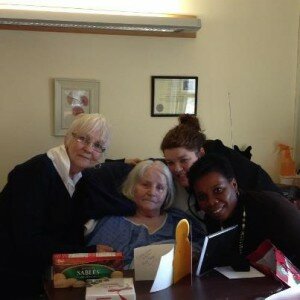This is Irene
Ogrizek –
"Hello, I have written about a similar problem in Canada. However, in this country, there is no recognized pathway and so our struggle is more difficult: it is hard to point fingers at something that we're being told doesn't actually exist. I have a series of articles I wrote about this problem. If you would like to read one of them, here is the link: http://ireneogrizek.ca/2012/12/28/5762-the-right-to-choose-life-or-death/"Irene's article highlights these major problems -
- Timing: As Dr. Patrick Pullicino states, in his critique of the LCP, “Predicting death in a time frame of three to four days, or even at any other specific time, is not possible scientifically.” It is also subjective. On the advice of doctors at my mother’s acute-care hospital, I signed a DNR for her in October, 2008. It is now December of 2012 and she is still alive. Another example: an elderly man Dr. Pullicino pulled off the LCP recovered enough so that he was able to return home. The 71 year-old had been admitted for pneumonia; another bout with it landed him in hospital 14 months later, at which time he was again put on the LCP. He was dead five hours later.
- Lack of consultation with families: Dr. Margaret Cottle, a palliative care doctor from BC, stated that in an article published in the Canadian Medical Association Journal, a confidential study showed that a full 32% of 208 Belgian doctors had performed assisted suicide without the knowledge or consent of the families of patients. A further 20% had euthanized patients without the patient’s consent. They felt that to have that conversation – like the conversation I had with my mother – would stress the terminal patients too much. It was simpler, instead, to euthanize. The same lack of consultation is a problem in the UK. It was the families of patients, for example, who raised the initial alarm about LCP; they did so when they realized loved ones had been put on the pathway, also without their consent.
- Creating the conditions and premature deployment: In part 1 of this article, I wrote about Diana Ford’s struggle to keep her father alive. Like Rodriguez, she is also taking her case to court, via the Ontario Appeals Board. Her argument? Many doctors habitually under-treat the elderly, allowing dangerous conditions and diseases to worsen. By doing so, they are creating favourable conditions for a protocol like the LCP. In my mother’s case, her symptoms of diminishing circulation, and then her gangrene, were treated as if she were on a slow boat to China. Although gangrene is potentially fatal, there was no urgency in her treatment that I could detect. As Patrick Pullicino has noted: “Very likely many elderly patients who could live substantially longer are being killed by the LCP.” Why? Because it’s the elderly that are particularly susceptible to the deployment of these
passive, let-nature-take-its-course strategies. It’s hard to imagine a doctor allowing a 32 year-old, with symptoms similar to my mother’s, being treated in quite the same way.
- The use of funding to promote the LCP: In England, reporters using the Freedom of Information Act discovered that hospitals that met quotas for putting patients on the LCP received significant financial rewards. Hospitals that failed to meet those quotas were heavily penalized. (One source of one hospital’s funding was halved when they didn’t hit their “target” numbers.) This creates a top-down incentive: administrators are motivated to look the other way when the LCP is abused. They do so to maintain high funding levels and to keep their jobs.
- Incapacitated patients may be abused: Not all sons and daughters are capable of taking care of their parents. Not all relatives or people who have power-of-attorney are honest. They may support the hastened death of an elderly relative or ward because they stand to gain financially. Again, this is a particular risk for older patients: most younger patients haven’t had the chance to accumulate wealth and most of them, like Sue Rodriguez for example, are of sound mind. The elderly are more likely to have significant assets and are also more likely to suffer from conditions which interfere with their decision-making. Easy access to the LCP may aid unscrupulous legatees.
These issues are not reasons to withhold a treatment like the LCP from everyone. For patients who are discernibly close to death, and who are in extraordinary pain, the LCP is humane if it is what they choose. The problem, of course, is creating a decision-making protocol to protect those most vulnerable to its abuses. The elderly are far more likely to be hastened towards death, as their deaths seem imminent and inevitable anyway.
In conclusion, we need to hold families and doctors accountable when the decision is made to end a life. Mandates for care have to be explicit and difficult conversations have to happen. The LCP pocket guide, the link to which I am providing below, is shamefully vague. As someone who teaches young people, and insists they express themselves clearly, I read this pamphlet with dismay: it is one of the worst examples of weasel-wording I’ve ever seen.

No comments:
Post a Comment